
Hello and welcome to Dressed for My Day. Today I’m introducing my 2020 style series, Transitioning to Slow Fashion. We’ll just stick with the basics today, whet your appetite, so to speak. But we’ll also look at where we’re going with this series throughout the year. I can’t wait to get started!
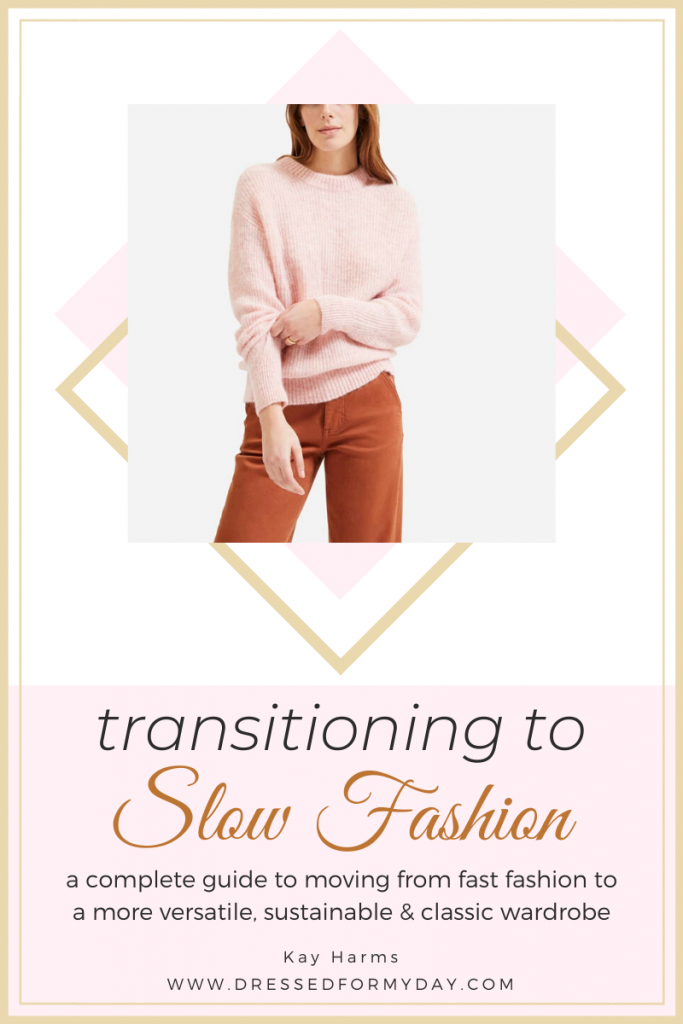
What is Slow Fashion?
There are as many definitions for “slow fashion” as there are writers explaining it. As with most “concepts,” the definition is broad and sometimes mingles with the tenets of other closely related concepts.
So, for the purposes of helping you and me as consumers to practice slow fashion, I’ll be defining slow fashion this way:
slow fashion: the concept of slowing down the fashion process by being more mindful of building a personal wardrobe that reflects your personal style, functions with versatility and lasts over time, thus preventing the need or desire to replenish it at a fast pace.
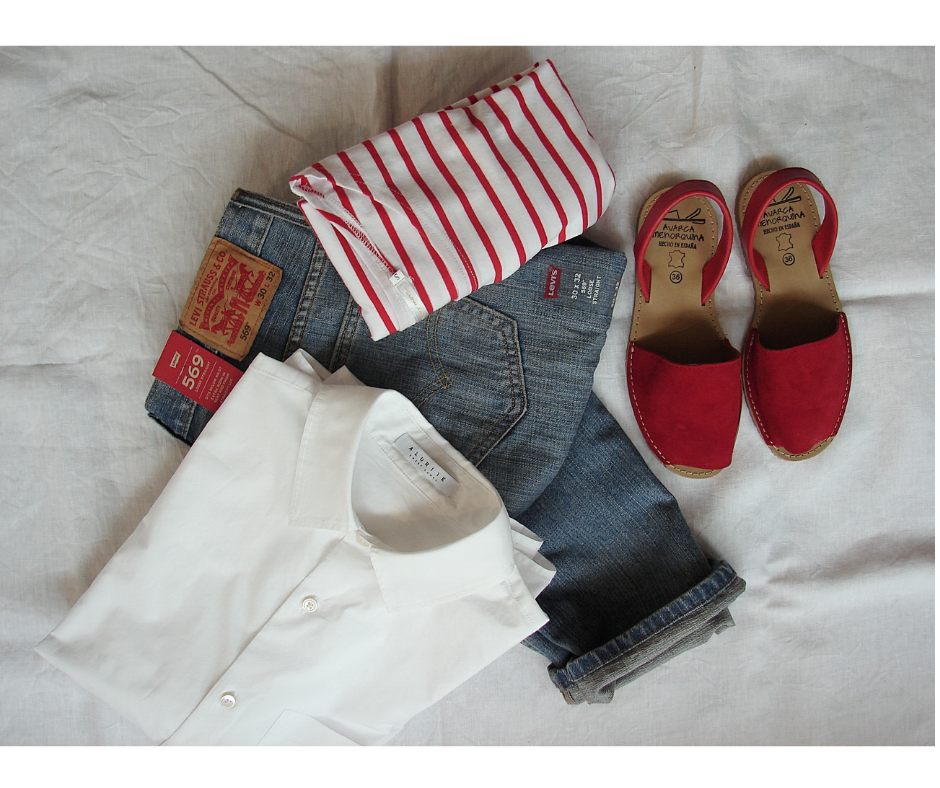
We’ll be looking at slow fashion from the consumer’s point of view, so I think that definition will work for us nicely. But let’s make sure we understand what else is at play.
You may frequently hear three different terms used interchangeably:
- slow fashion
- sustainable fashion
- ethical fashion
While these three concepts definitely have some cross-over, we’re really talking about different parts of the equation with each of them.
What is Sustainable Fashion?
When we discuss the sustainability of fashion the talk may be about how long clothing pieces lasts. But the goal is not just to stretch the life of our clothing; it’s to responsibly consider the environmental impact of the fashion industry as a whole and of our personal garments specifically.
Practicing sustainable fashion is considering the whole life-cycle of the product. It’s thoughtful use of resources (yours and the world’s) and minimizing waste.
In short, we, as consumers, can practice sustainable fashion by being more mindful of who makes our clothing and how it is made, keeping our clothing in our wardrobe for longer and then extending the life cycle of products we no longer want through innovative measures. We’ll talk more about those in another post.
What is Ethical Fashion?
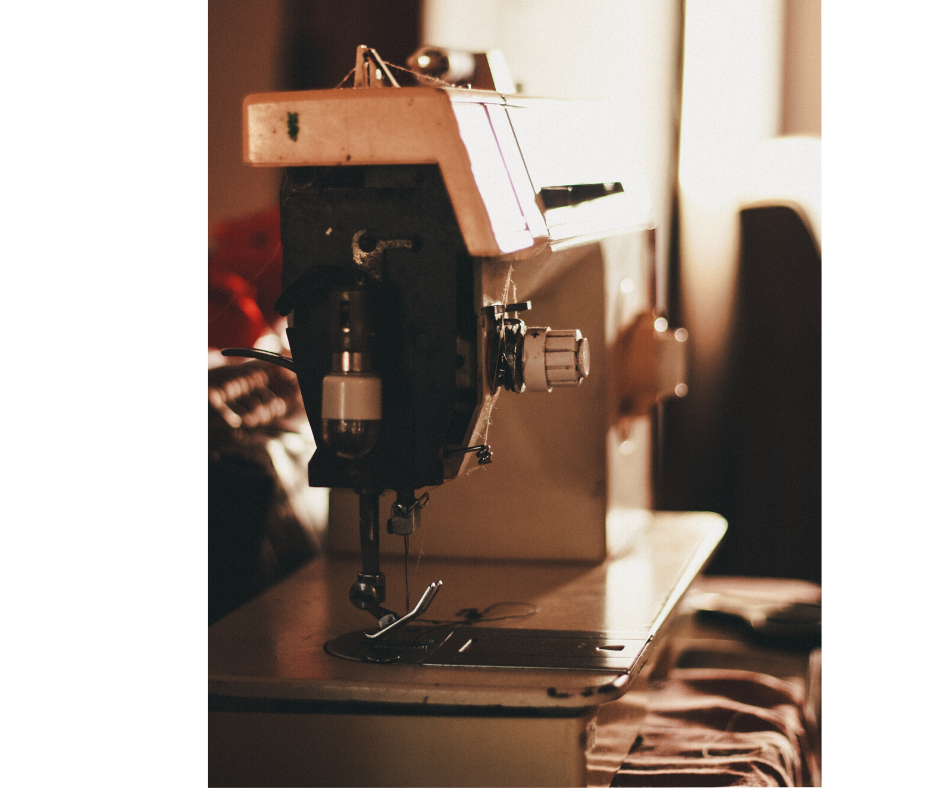
The term ethical fashion focuses on ensuring humane treatment in the production of clothing and accessories. When we insist on ethical fashion, we consider:
- working conditions
- fair wages
- treatment of workers and crafts people
- treatment of animals
- child labor
What do these three terms have in common?
While slow fashion, sustainable fashion and ethical fashion actually cover three different concepts, they all intersect.
To practice slow fashion, sustainable fashion and/or ethical fashion, we’ll have to slow down and be more mindful consumers.
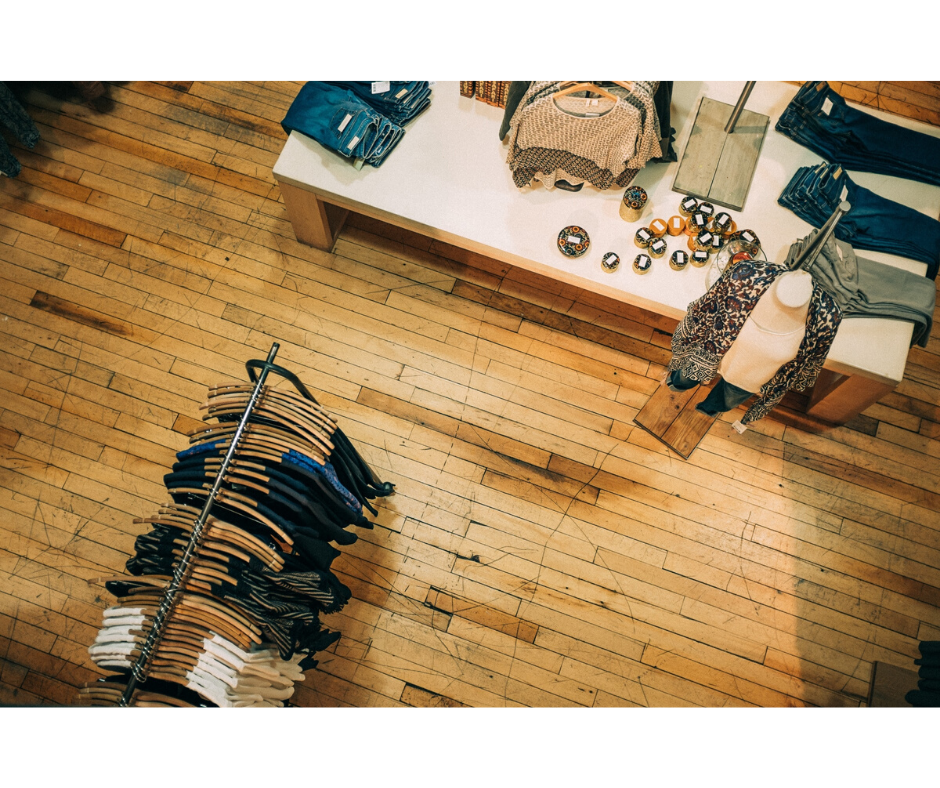
Slow Fashion vs. Fast Fashion
There was a time in the past when the fashion process was slower. It wasn’t necessarily more ethical or responsible, mind you. But the processes of producing and buying fashions were slower and products also tended to last longer. In fact, designers and brands only produced a couple of lines of styles each year.
But now many of the brands you and I shop produce new lines or sets of styles as frequently as bi-weekly. Combine that with increased consumer awareness of trends and the speed of advertising, and you have the frenzied pace at which many of us have become accustomed to adding to our wardrobes.
The problem with fast fashion
In the fast fashion frenzy, most of us have forgotten or never learned how to really build a wardrobe. Instead, we’ve taken to shopping for sport, accumulating goods that we know we’ll dispose of at the end of one or maybe two seasons. We view our clothing as disposable, so we want to spend less on it and we expect less of it.
Honestly, many of us don’t even know how to shop for quality garments or accessories. We don’t know what to look for beyond the price tag. So we associate high price with quality and then we determine that we can’t afford it. That drives us to resort to the cheaper fashions…and the cycle perpetuates.
And in that perpetual fast fashion cycle, laborers don’t get paid fair wages, dangerous short cuts are taken, prices don’t necessarily reflect quality, we become even more materialistic, landfills accumulate piles of barely used clothing and resources are diminished needlessly.
The challenge of slowing down
Fast fashion has become our culture’s new normal. If you choose to move toward slow fashion, you will be going against the current.
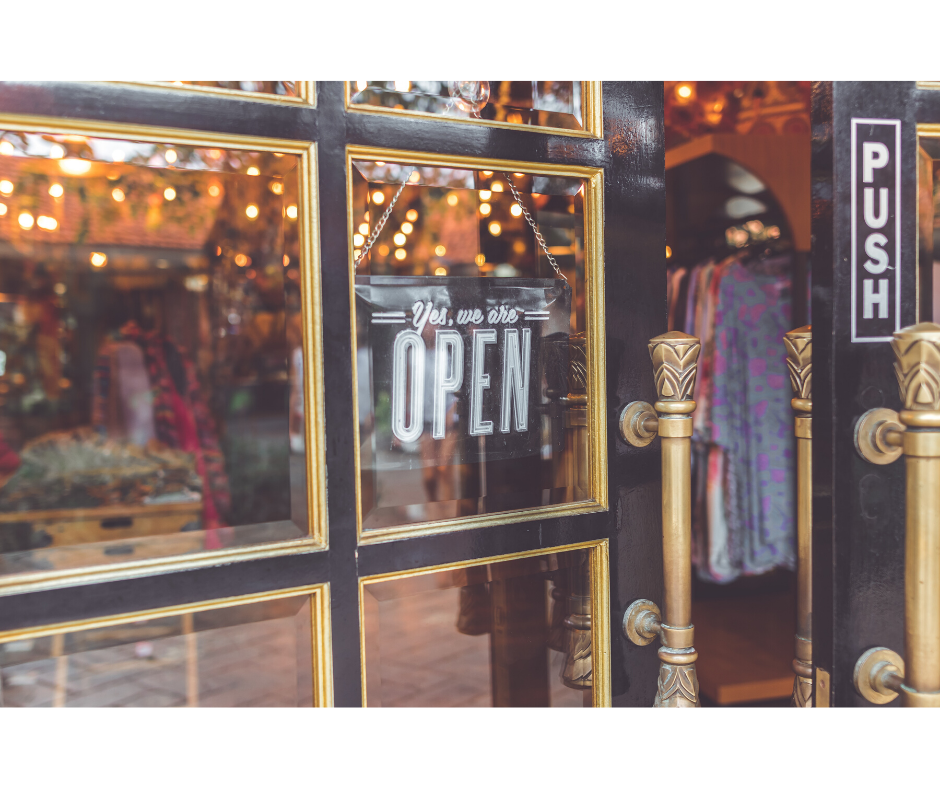
First, let’s understand that I am not an expert on slow fashion. I’m researching the concepts and investigating brands so that I can share my findings here with you. This will be a learning process for those who take the challenge and make the commitment.
Second, I don’t think we can adopt a slow fashion practice overnight. I think the best you and I can probably do is move toward slow fashion. It will be a process.
How will we move toward slow fashion at Dressed for My Day?
Here’s my current plan for helping us to move toward slow fashion in 2020. Obviously this plan could change as we go.
- Evaluate – We’ll learn how to evaluate our current wardrobes.
- Consider – We’ll consider our personal values and how they should affect our consumer choices.
- Investigate – We’ll investigate brands and retailers to understand their values and practices.
- Slow down – Then we’ll begin to slow down our shopping and purchasing habits. We won’t quit. That’s not feasible. But we’ll slow down.
- Define – Before we can move further toward a slow fashion lifestyle, we’ll need to define our personal or signature style. We did some of this in last year’s style series, but we’ll revisit it.
- Strategize – We’ll be strategical about how we’ll build a sustainable wardrobe that works for us. Again, we’ll revisit some of what we learned in last year’s style series.
- Focus – We’ll turn our focus to styling our personal wardrobes rather than just buying more clothing. That doesn’t mean I won’t share new clothing, but I’ll be providing more styling tips.
- Care – We’ll learn new ways to care for our wardrobes so they last.
- Expand – Finally, we’ll learn how to expand the life cycle of the pieces in our wardrobes through innovative measures, such as donating, repairing, upcycling, consigning, and recycling.
So that’s my plan.
Here’s my goal. I personally want to slow down so that I can have a different relationship with my wardrobe. I don’t want to view it as disposable and ever-changing. Instead, I want to enjoy curating a good (not necessarily high, but good) quality wardrobe that I can mix and coordinate in an enjoyable way that expresses my style, while being mindful of how my clothing was made and what kind of carbon imprint it is making on the world. I’d like for many pieces in that wardrobe to serve me for the rest of my life and for most of the garments to stay in my wearable closet for years.
And I’d love it if you’d join me in that journey.
Let me know if you have any questions about what you’ve read here today. It’s a good time to start the conversation. So I’ll stay close today and try to hop in here and answer your comments. Let me know your thoughts!
Save + Share
If you enjoyed today’s post, I hope you’ll save it to one of your Pinterest boards. Oh, and share it with your friends on Facebook, too. I love it when new readers find Dressed for My Day because you’ve shared what you found! You’ll find share buttons just below the scripture in the Blessed for My Day portion of the post. And Pinterest buttons should appear when you hover over the following graphic (or any of the graphics in this post).
Don’t Miss a Post:
If you like what you’re seeing here at Dressed for My Day, I invite you to subscribe to my email list. You can receive an email each time I post (about 6 times weekly) or just on Saturdays. You choose! But you’ll also receive the password to open up all the subscriber freebies I offer.
Blessed for My Day
While the parable of the rich fool in Luke 12:13-21 certainly teaches us about the foolishness of hoarding up possessions, there is something else about that story that always catches my attention. I’m convicted by the foolish land owner’s way of reasoning through his “predicament.” If you read the verses even casually, you notice that he simply does what seems best to him.
Over and over we read, “I will…I will…I will.” And how did he come to his decisions? He “thought to himself.” Today let’s be on guard so we don’t make the same mistake that leads to foolish actions. Instead of thinking to ourselves about how to handle life’s decisions, let’s ask God to direct our paths. And let’s look to His Word for clear directions.
And he said to them, “Take care, and be on your guard against all covetousness, for one’s life does not consist in the abundance of his possessions.” ~ Luke 12:15

Thank you for helping us become more mindful consumers! I look forward to learning more.
Great! I’m glad you enjoyed the post. I think it will be a great series. a little challenging maybe. but that’s a good thing!
I like the idea of substantial fashion. I’m not sure you have ever looked at Lands End, I have items I’ve had for twenty plus years. They have fashionable as well as basic items at reasonable prices. They always have a % off items. That is the way I shop. I would say at least 50% of mine and my husband’s wardrobe is from Landsend.
Hi Janice. I used to shop a lot at Lands End, especially when raising my kids. And I did at least one post featuring their clothing last year. So yes. I’ll definitely be checking them out.
Great information Kay. I love keeping clothes for a long time. (I don’t follow too many trends). It’s funny (and sad) how some items I’ve had in my closet for years are still in better shape than recently bought “fast fashion” items.
I’m sue that is absolutely true. We have to remember that as brands speed up their production cycle, quality is lost. So anywhere that we shop that features new clothing every couple of weeks is probably cutting corners. Thanks for sharing!
So excited about this. I have been working on this a little bit myself so it will be wonderful to have advice. I do love fashion, but not just trends! Thank you.
Great, Martha. I’m glad you’re on board…already!
What a great post! I’ve been leaning this way for some time. I’ve looked primarily to your posts as inspiration to combine what I have in new ways. Our daughter definitely leads me in this – she’s been way ahead of me in thinking about sustainability and ethical purchases, as I think many of her generation are. So maybe this is the new way to be youthful – creating looks in a sustainable way!!!
Yes I definitely think the younger generations are characteristically more aware of our environment and labor practices. And really we should be leading the way in this. Thanks for sharing!
Perfect timing. I am looking forward to this series. I am so easily tempted by sales to purchase clothing that I don’t even need and my closet shows it! Time to clean up and slow down and be more thoughtful.
Yes I face that same temptation. I thought about just telling myself, “Stop it!” But I think the better approach is to work with a plan. We gals still love to have a little something new every now and again. But we can make those thoughtful purchases that are part of our overall strategy and for which we have saved.
An excellent beginning! I look forward to building a more functional and less wasteful wardrobe. I had already decided to slow down, so this is timely. Thank you!
Great to hear Suzi. I’m glad you’re in!
Kay, I pinned this post on Pinterest because it contains so much helpful information. I really appreciate all of the research you have done and will continue to do for this series. I am definitely looking forward to this series for so many reasons. I want to continue building more outfits with what I already have in my closet because I have more than enough clothes. I do hope that you will share lower priced items that are sustainable and manufactured with a conscience. Have a great day!
Hi Ginger. My goal is certainly to share items from various price points so I will definitely try. But I’m also committed to becoming more aware and informed about quality construction and ethical production. So we’ll have to see where that leads!
I am so excited by the slow fashion approach! It’s new to me and makes so much sense! I am also excited to have guidance and tips for how to do this!! I find the Dressed for My Day posts so helpful and I look forward to them! Thanks!
Great to hear Trisha. Thanks for letting me know. ?
Thanks for an excellent start to this transition! Can’t wait to explore this concept over 2020…
Great. Thanks for sharing Cyndi.
Kay, You have read my mind. A few months ago I was talking to my husband about building a more classic and timeless wardrobe. For Christmas I received a simple classic wool coat and a creamy cashmere turtleneck. Last year I started bringing gently used clothing to a local consignment shop and continued to donate clothing. I’m on my way. It will be so enjoyable to read your insight into slow fashion. I’m looking forward to it. Have a great day!
Great to hear! You’re ahead of the curve!
This is perfect…. I have already made the personal decision to stir away from fast fashion and focus more on quality pieces rather than disposable ones. Look forward to this and glad to hear I’m not the only one that needs to slow down….
Thanks for sharing Dee. I’m glad to know you are in! ?
Kay,
This is a great concept! ?
I’m actually refraining from spontaneous impulse buys shopping. I want to shop with a purpose for my closet, but still look fresh and up to date! More of a capsule type wardrobe, with some seasonal pieces. I also want to continue my focus on family, faith, health and fitness in 20/20.
Also your blessed for my day is so inspirational! ❤️
Yes, all that will continue here. I’ll be working with a capsule wardrobe too. I’ll share more about that in the future. Thanks for sharing!
Hi! I enjoy reading your posts. They have always helped me to stay current in fashion. Question: does embracing slow fashion mean this blog will focus on classic styles as opposed to trends? I really hope you will continue to help us stay current on trending fashions. For some of us, that is a greater need than learning slow fashion. Thank you!
So there’s a difference between trends and fads. Fads tends to make a flash and then fade quickly. But trends are the direction style choices are moving. We’ll definitely address and feature some of both here, but I tend to participate in fewer fads than trends. But, yes, I’ll definitely be helping us all stay current and modern within our own personal style choices. This path does not exclude staying stylish but simply approached it differently and, I think, with a little more balance.
I am all for quality products at a reasonable price. Lately so many clothes just fall apart after they are washed. Sweater began to pill on the second wear. There must be companies out there who don’t use sweat shops to see their clothes. Clothes thst will last the way they once did. I’ve bought some vintage Kate,y in search of good quality clothes. It is difficult but if consumers refuse to buy shoddy products made I sweat shops, that might be a start.
The comment section is so tiny and light in color of type. Is it just me?
Thanks for sharing Eve. Yeah, I don’t know why the comment words look like that as you’re typing. I know it’s aggravating. I’ll see what I can do. But we may have to wait on the roll out of the new website. Thanks for your patience. ☺️
Kay,
You are quickly becoming one of my favorite bloggers. In fact, it is you and your blog to which I most relate.
Many bloggers tend to encourage uncontrollable spending by the way they feature so many new outfits and pieces.
I am totally on board with your idea of “slow fashion” this year and had already decided to step back from purchasing
so many “things”. Your scripture from Luke further solidifies the importance of reining myself in (so to speak).
Thank you
Great to hear Camille. Thanks so much for sharing.
I’m totally on board with the themes you’ve raised above. Thank you. Also, any idea who makes the cute red shoes in the picture you posted!!
Hahaha! No. ☺️ it’s just a stock photo. Thanks for sharing.
What a great post! You nailed it and thank you for researching and sharing. I think more bloggers may want to take note. Will look forward to what you share in the future.
Great to hear. Thanks so much for sharing. I think it’s going to be a fun but challenging process. ?
I enjoy your blog tremendously, particularly your Saturday posts, and am especially interested in the direction you’re taking.
Would you please consider teaching us about fabrics? For example, I’ve learned through experience that a sweater that’s primarily made of acrylic usually starts getting pills on it after a couple of wears, compared to a sweater that is mainly cotton that doesn’t. Additionally, I’d like to purchase a cashmere sweater but haven’t because I’m ignorant concerning how to identity one that’s a good value.
You bet! Great post idea. Thanks for sharing.
Excellent post and perfect timing as one of my goals this month is to take a good, hard look at my clothes and purge where necessary. I’ve been donating and selling my no-longer-needed, gently used clothes for the past several months so this is a great reminder. Thanks for your insight and I look forward to more information on this important subject!
Great to hear, Helen. I’m excited that so many women seem to be eager to get started.
Great post Kay. I love to shop and find it hard to go into a store just to “look”. It never works out for me. I have so many clothes that I love but I really have too many. I would also love a post about fabrics. I have been so dissatisfied lately with sweaters that pill almost immediately. Some of them were not cheap either. Looking forward to the rest of this series?
Thanks for letting me know Deb. As to the sweaters, from what I understand, most any fine sweater will pill. In fact, the better the cashmere, the more likely it is to pill. Here’s what I found: “Fabrics made of long fibers like silk and linen pill less than wool, cotton, polyester, and other synthetic threads. When fibers are mixed in a fabric like a cotton/polyester blend, one fiber is usually much stronger than the other. The weaker fiber will break, knot around to the stronger fiber, and a pill is formed.” But eventually, any woven fabric will pill.
The key is learning how to get rid of the pills and washing these items gently by hand so that the pills do not grow and multiply in the laundry. You can use the Laundress Sweater Comb on thin, lightweight sweaters, scarves and such: https://shopstyle.it/l/bcC1N Or you can use the Laundress Sweater Stone on most of your thick, woolen sweaters, outerwear or blankets: https://shopstyle.it/l/bcC1T
Hope that helps!
Great idea, since i am somewhat older (raised in the 50’s we were taught to take care of our wardrobe. Had Home Ec in school where we learned to appreciate good fabrics and quality work. My good friend who became blind in her 40s can tell this by touch and is one of the classiest dressers I know. Keep up the good work. Still have a lot to learn.
Great idea, since i am somewhat older (raised in the 50’s we were taught to take care of our wardrobe. Had Home Ec in school where we learned to appreciate good fabrics and quality work. My good friend who became blind in her 40s can tell this by touch and is one of the classiest dressers I know. Keep up the good work. Still have a lot to learn.
Thanks for the encouragement, Lois. I think it’s going to be a great series for all of us!
I think something else to consider with regard to the environmental impact is the incredibly high number of shipments going back and forth. I see more and more bloggers recommending buying multiple sizes of clothing to try on at home because you can always send one or more of them back, but that attitude makes me cringe a little. I know we all love getting packages, but I do stop and think a lot more before ordering things now that my awareness of this environmental impact has increased.
That’s a great point Alison. Ouch! Hahaha! I have to admit to liking the ease of ordering multiples and sending back what I can’t wear. But you’re absolutely right. I guess the key for me then is simply to be responsible about it. Plus, I just don’t like paying for something and having it on my credit card if I’m not going to keep it…if at all possible. So I really try to take advantage of every opportunity a retailer gives me to figure out my size. Some brands even give the option of talking to a fit specialist. I guess we really should take advantage of that, too!
Thanks so much for sharing this perspective.
I really like your ideas regarding slow fashion. I find that idea pretty much fits the contents of my closet. Clothing that is timeless and conservative is what I wear most, and the fast or trendy fashions (that I have made the mistake of buying) tends to disappear into the depths of the closet. (However, at age 72, fast fashion just doesn’t fit my lifestyle.) In my (humble and conservative) opinion, there are simply some things that shouldn’t be worn after “une certaine age” (a wonderful French phrase meaning no longer young, but not yet old). Many styles remind me of my early childhood or fashion of the late 60s and 70s. Been there, done that! I am looking forward to some suggestions to gently ease into the current century, but always with an eye on my conservative roots!
Looking forward to this style series. So many blogs showcase new clothes daily and rarely are any of the items ever restyled. We will finally have a place to find inspiration, tips & resources, THANK YOU!
Well, that’s the goal, anyhow! Hahaha! We’ll see if I can live up to this standard I’ve set. I’m certainly willing to try. But I will need you gals to be patient with me as we move forward. Thanks so much for sharing!
Love this idea. I have already migrated toward this in my own closet. I used to shop for sport regularly but found both my style and my budget suffering. With a better quality item, how we care for it will make a huge difference. Would you consider including tips for how to care/wash/clean various clothing items?
Yes. Absolutely.
Kay, I love this! I have been doing this for several years. Trying to purchase more staples that are timeless and go with the ebb an flow of my everyday life. I love going into my closet and creating new outfits with pieces that never go out of style. Thanks for your insight and encouragement to be the best we can be both inside and out!
Rhonda
Great to hear Rhonda. Glad so many of us are on the same page. ?
For me, 2020 is the year to pare down and enjoy what I already have….BUT—the guilt I have for my past splurges, things that are still hanging with tags, never worn, or the abundance of stuff I’ve hardly touched is so hard to overcome! I donate a lot, but still “love” so many things, yet need only a small portion….it’s difficult not to beat myself up over having “too much stuff”!! Your bible reference has definitely hit home with me! I’ll look forward to learning and growing this year to become a more conscious shopper and will focus on what is already in my packed closet!
Yes to slow fashion! I like fashion, but not cheap, short lived, super trendy clothes. I like my clothes to last a long time and not fall apart after one season. Looking forward to more of this series!
I am a little behind on my emails and reading your blog. Better late than never. I had made the decision in December to embrace slow fashion after looking at what I was spending on clothing and taking a good hard look at my closet. I spent the Christmas season doing reading about slow/sustainable/ethical fashion. I am so glad to have you also on the journey. I don’t think I will need much this year but have made a commitment to buy pieces that will last, are well made, are easily cared for at home. I am ready to learn along with you
I look forward to learning❗️
I so agree with the slow fashion concept, and generally practice this with what I buy. One difficulty I’ve experienced with trying to buy pieces that last, is the change in color shades from year to year. The jacket you bought in a gorgeous color for you doesn’t go with the new shades that are available; the new ones are too bright, too deep, too pale, too yellow-based or blue-based, too grey, etc. So I’ve learned I need to budget differently, so when a color that is good for me, and one I love is “in”, I can purchase more pieces that work together in that color, and not have something in my closet that no longer works.
Great! Thanks for sharing Pat.
Ii love the direction you are going. I so want to do what you have stated today. I believe God would have us , at least me, move this direction
I love that you’re doing this! Have been trying to be more mindful of purchases, Including clothing and food. It can be hard to balance with wanting a “good deal.” Fortunately, there are more and more options. Ten Thousand Villages was early to the party. A friend recently told me about Ssesko and Able. Can’t wait to see what you do! Thanks!
Really glad to see you’re doing this. Wish more fashion bloggers were using their influence this way.
Hi Kay! I love catching up with your posts on Saturdays! Like the other responses, I have also decided to move towards a “more versatility with fewer pieces” mindset for my wardrobe. I’ve spent quite a bit of time over the past several weeks clearing out my closet, trying things on, and just keeping the pieces I love and look fabulous on me. No more “this is OK so it will do” purchases for me. I’m going for more 10s and fewer 6s, if you know what I’m saying. This is super timely! I think a lot of ladies are looking to do exactly this with our wardrobes. Really looking forward to this series. Happy 2020!
Great to hear, Michele. I’m so glad you enjoyed the post and that you’re already ahead of the game. I’m really looking forward to all we are going to learn this year. ?
Hi Kay, this is a great idea! I appreciate your encouragement that we be more mindful about what clothing we buy – what and why! I recently retired, so I no longer need a work wardrobe, so I am transitioning my closet to fit my new more casual life. Look forward to your tips and ideas on how to do this with slow fashion in mind.